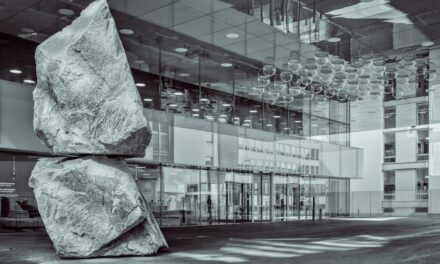Texture is an essential element in the realm of drawing, serving as a bridge between the viewer and the artwork. It adds depth, interest, and realism to a piece, allowing the audience to engage with it on a sensory level. When an artist successfully conveys texture, they invite the viewer to not only see but also to feel the surface qualities of the subject matter.
This tactile quality can evoke emotions and memories, making the artwork resonate more profoundly with its audience. Whether it’s the roughness of tree bark, the softness of a pet’s fur, or the smoothness of a glass surface, texture plays a pivotal role in how we perceive and interpret visual information. Moreover, texture can significantly influence the mood and atmosphere of a drawing.
A piece that employs heavy, jagged lines may evoke feelings of chaos or tension, while soft, flowing strokes can create a sense of calm and serenity. Artists can manipulate texture to guide the viewer’s eye through the composition, highlighting focal points or creating a sense of movement. Understanding how to effectively use texture is crucial for any artist aiming to elevate their work from mere representation to a compelling narrative that engages the senses and emotions of its audience.
Summary
- Understanding the importance of texture in drawing is crucial for creating realistic and engaging artwork.
- Techniques for drawing realistic fur include using a variety of strokes and paying attention to the direction of the fur.
- Tips for creating realistic fabric textures involve observing the way fabric drapes and folds, and using shading to create depth.
- Mastering the art of drawing wood textures requires attention to detail and understanding the grain and patterns of different types of wood.
- Choosing the right tools and materials for texture drawing, such as different pencils, erasers, and paper, can greatly impact the outcome of the artwork.
Techniques for Drawing Realistic Fur
Drawing realistic fur is a challenge that many artists aspire to master, as it requires a keen understanding of both technique and observation. One effective method is to start with a light sketch that outlines the basic shape and flow of the animal’s body. This initial step allows artists to establish proportions and ensure that the fur will follow the natural contours of the subject.
Once the foundation is laid, artists can begin layering their strokes to create the illusion of depth and dimension. Using short, quick strokes mimics the individual strands of fur, while varying the pressure on the pencil can help achieve different shades and textures.
Observing how light interacts with different areas can also enhance realism; highlights can be added with an eraser or lighter pencil strokes to suggest shine and softness. Additionally, blending techniques can be employed to soften harsh lines and create a more cohesive look. Artists may choose to use tools such as blending stumps or even their fingers to achieve this effect.
Ultimately, patience and practice are key; capturing the intricate details of fur requires time and dedication, but the results can be incredibly rewarding.
Tips for Creating Realistic Fabric Textures
When it comes to fabric textures, artists must consider various factors such as weave patterns, light reflection, and draping. To begin, it is essential to observe how fabric behaves in real life. Different materials—such as silk, cotton, or wool—have unique characteristics that affect their appearance.
For instance, silk has a smooth surface that reflects light beautifully, while wool tends to have a more matte finish with visible fibres. By studying these differences, artists can better replicate them on paper. One effective approach is to start with a base layer that captures the overall shape and flow of the fabric.
Once this foundation is established, artists can build up layers of shading to create depth. Using a combination of hatching and cross-hatching techniques can effectively convey the texture of fabric. Additionally, incorporating highlights and shadows will enhance the three-dimensional quality of the material.
It is also beneficial to experiment with different pencil grades; softer pencils can create darker shades while harder pencils are ideal for fine details. By combining these techniques and paying close attention to the nuances of fabric, artists can achieve stunningly realistic representations.
Mastering the Art of Drawing Wood Textures
Wood is another material that presents unique challenges when it comes to texture drawing. The grain patterns, knots, and variations in colour all contribute to its distinctive appearance. To effectively capture wood textures, artists should begin by studying real wood samples or high-quality photographs.
Observing how light interacts with different surfaces will inform their approach to shading and detailing. A common technique for drawing wood involves using long, flowing strokes that mimic the natural grain of the wood. Artists can vary their pencil pressure to create lighter and darker areas, which helps convey depth and dimension.
Incorporating cross-hatching can also add complexity to the texture, particularly around knots or imperfections in the wood. Additionally, artists should not shy away from using erasers to create highlights; this technique can effectively simulate the reflective quality of polished wood surfaces. By mastering these techniques, artists can create lifelike representations that celebrate the beauty of this natural material.
Choosing the Right Tools and Materials for Texture Drawing
The choice of tools and materials plays a significant role in achieving realistic textures in drawing. Pencils are perhaps the most fundamental tool; artists should consider using a range of graphite pencils from hard (H) to soft (B) grades. Hard pencils are excellent for fine lines and details, while soft pencils are ideal for shading and creating rich textures.
Additionally, coloured pencils can be used to add vibrancy and depth to textures, particularly when depicting materials like fabric or foliage. Beyond pencils, other tools such as blending stumps, tortillons, and kneaded erasers can enhance an artist’s ability to manipulate texture effectively. Blending stumps allow for smooth transitions between shades, while kneaded erasers can lift graphite without damaging the paper—perfect for creating highlights or softening edges.
The choice of paper is equally important; textured paper can add an additional layer of interest to drawings, while smooth paper allows for finer details. By carefully selecting tools and materials that complement their style and subject matter, artists can significantly improve their ability to convey texture in their work.
Adding Depth and Dimension to Textures
Contrasting Light and Dark Areas
For instance, when drawing a shiny object like glass or metal, artists should focus on sharp contrasts between light and dark areas to convey its reflective quality.
Layering for Volume
Layering is another essential technique for adding depth. By building up multiple layers of shading gradually, artists can create a sense of volume within their textures. This approach allows for subtle transitions between light and shadow, enhancing the three-dimensionality of the subject.
Defining Edges with Line Weights
Additionally, incorporating varying line weights can help define edges and create a sense of space within the composition. By mastering these techniques, artists can elevate their drawings from flat representations to dynamic works that engage viewers on multiple levels.
Incorporating Texture into Different Drawing Styles
Texture is not limited to realistic representations; it can also play a significant role in various drawing styles such as abstract or impressionistic art. In abstract works, texture can be used expressively to convey emotions or ideas without relying on representational forms. Artists may experiment with different mark-making techniques—such as stippling or scribbling—to create rich textures that evoke feelings or sensations.
In impressionistic styles, texture often serves as a means of capturing fleeting moments or impressions rather than precise details. Artists may use loose brush strokes or varied line work to suggest movement and light rather than focusing on accuracy. This approach allows for a more emotive interpretation of subjects while still conveying a sense of texture through colour and form.
By exploring how texture functions within different styles, artists can expand their creative vocabulary and develop a more versatile artistic practice.
Experimenting with Mixed Media for Texture Drawing
Mixed media offers exciting opportunities for artists looking to explore texture in new ways. By combining traditional drawing techniques with other materials—such as ink, pastels, or collage—artists can create dynamic compositions that engage viewers on multiple sensory levels. For instance, incorporating textured papers or fabrics into a drawing can add physical dimension while also enhancing visual interest.
Additionally, using unconventional tools—such as sponges or brushes—can yield unique textural effects that traditional methods may not achieve. Experimenting with layering different media allows artists to discover new ways of expressing texture while pushing the boundaries of their creativity. The interplay between various materials can lead to unexpected results that enrich an artist’s work and provide fresh perspectives on familiar subjects.
In conclusion, mastering texture in drawing is an intricate process that requires observation, practice, and experimentation. By understanding its importance and employing various techniques across different materials and styles, artists can elevate their work significantly. Whether capturing the softness of fur or the intricacies of fabric, texture remains a vital component in creating compelling art that resonates with viewers on both visual and emotional levels.
If you are interested in exploring more about art and museums, you may want to read an introduction to the British Museum in London, UK. This iconic institution houses a vast collection of art and artefacts from around the world, making it a must-visit for art enthusiasts. You can learn about the history and significance of the museum by visiting com/an-introduction-to-the-british-museum-london-uk/’>this article.


